1. Stingrays – The Ocean’s Sneaky Spike Traps

You’re wading through the warm, shallow waters of Florida, feeling the soft sand between your toes, when suddenly—searing pain explodes through your foot. You’ve just stepped on a stingray. These flat, disc-like creatures aren’t aggressive, but when startled, they whip their venomous barbed tail straight into their perceived attacker. And yes, that attacker is often an unsuspecting beachgoer.
The sting isn’t just painful—it’s excruciating. Victims describe it as a white-hot, radiating burn that can last for hours. The venom causes intense throbbing, swelling, and in rare cases, muscle paralysis. Worse, if the stingray’s barb breaks off inside the wound, it might require surgery. Their natural camouflage makes them nearly invisible against the sandy seafloor, which is why the “stingray shuffle” (dragging your feet instead of stepping) is a must in stingray territory. Because let’s be honest—you really don’t want to spend your beach day getting impaled by an underwater ninja.
2. The Oyster Toadfish – Ugly, Angry, and Armed with Needle Teeth
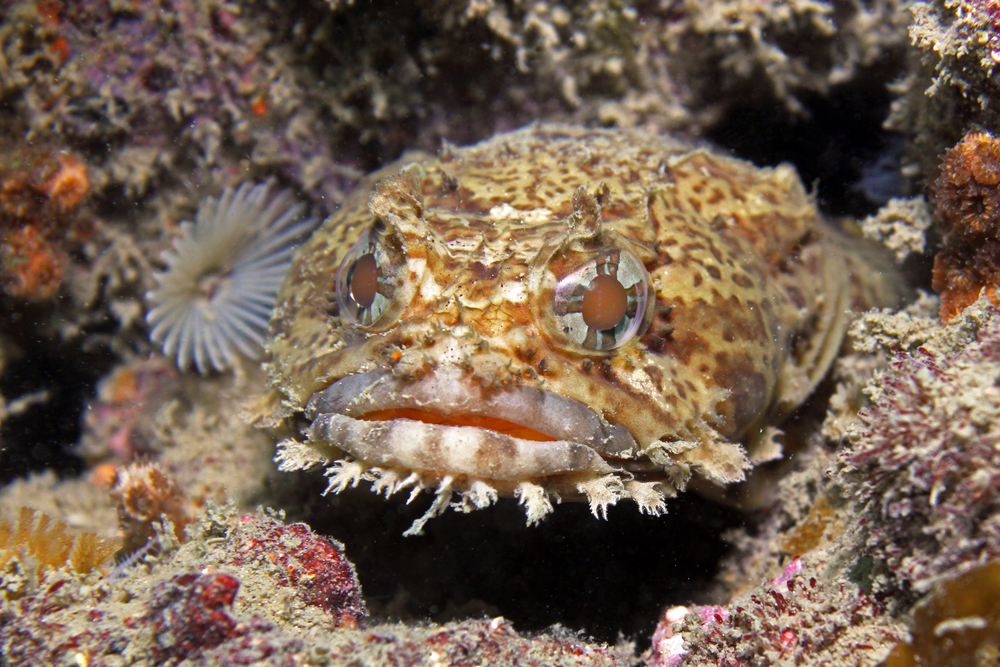
Imagine stepping on something that immediately bites back. Meet the oyster toadfish, a hideous, frog-faced bottom dweller with a serious attitude problem. Found in the brackish waters along the East Coast, these guys love hiding under docks, in oyster beds, or anywhere murky enough to keep their ambush tactics effective.
The problem? Their powerful jaws are lined with sharp, needly teeth designed to crush shells. That means stepping on one can result in a lightning-fast chomp, leaving you with deep puncture wounds and a newfound respect for this grumpy-looking fish. Some unlucky swimmers have even been left with severed tendons after an oyster toadfish latched on and refused to let go. And just for added nightmare fuel, they make eerie croaking sounds when agitated—because, apparently, being bitten wasn’t terrifying enough.
3. The Atlantic Stingray – A Mini Assassin in the Sand

If stingrays weren’t already bad enough, the Atlantic stingray adds an extra layer of trouble. It’s smaller than its cousins, meaning you’re even less likely to spot it before accidentally stepping on it. And while its sting isn’t usually lethal, it can cause serious infections if left untreated.
The real danger comes from people who brush off the pain as “just a scratch”—only to find themselves with a festering wound days later. Bacteria from the ocean floor can seep into the puncture, leading to swelling, tissue death, and sometimes amputation. That’s right, losing a toe to a tiny stingray is a real possibility. If you ever get stung, rinse the wound with the hottest water you can tolerate (it helps break down the venom) and get yourself checked out immediately.
4. The Blue Crab – The Angry Sidewalk of the Sea
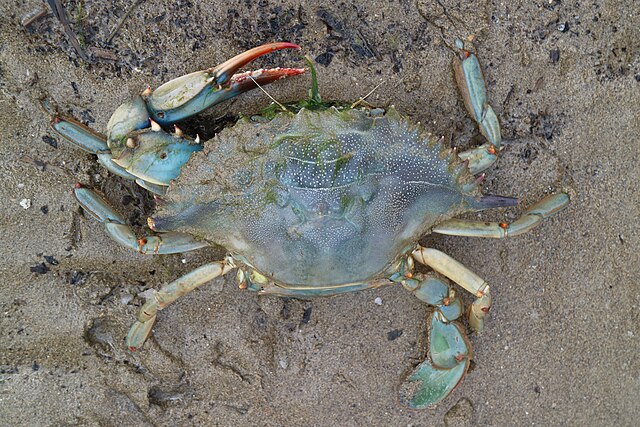
You’ve seen them on seafood platters, but in the wild, blue crabs are less delicious and more dangerous. These feisty little crustaceans lurk in the shallows, half-buried in sand, waiting for something—or someone—to get too close. If you step on one? Prepare for an instant, crushing clampdown from pincers that can slice through flesh like scissors through paper.
And here’s the real kicker: they don’t let go. Once a blue crab gets a grip, it holds on with the tenacity of an angry toddler. The only way to make it release is to dip it back into the water—which is not exactly easy when you’re hopping on one foot, screaming in pain. Some beachgoers have ended up with fractured toes, deep gashes, and an irrational fear of seafood thanks to these armored little nightmares.
5. The Crown-of-Thorns Starfish – A Living Minefield of Venomous Spikes
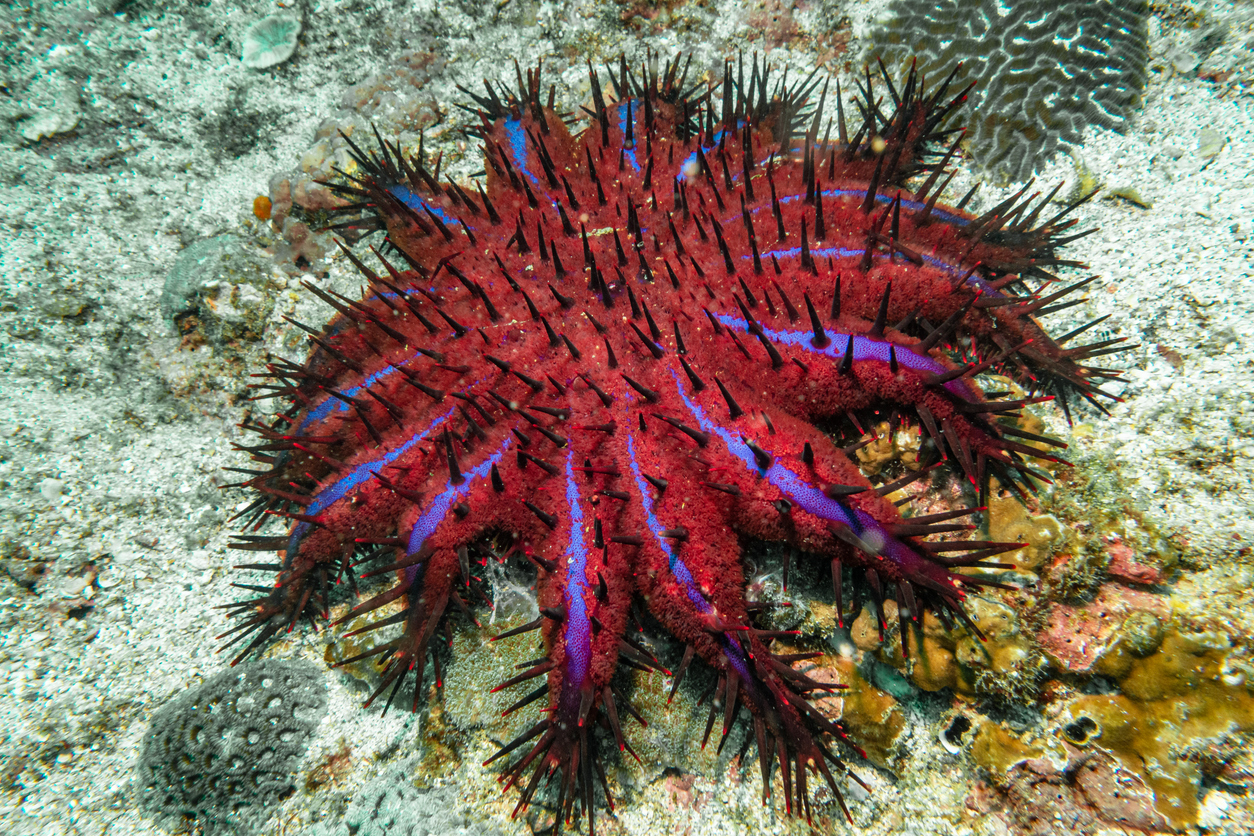
Starfish are cute, right? Not this one. The crown-of-thorns starfish is like a medieval weapon that learned how to swim. Covered in venomous, razor-sharp spines, this creature can turn a casual wade through shallow waters into an emergency-room visit instantly.
Each of its spines contains neurotoxins that cause searing pain, nausea, and sometimes temporary paralysis. If even a single spine breaks off inside your skin, it can trigger months-long inflammation. Divers who’ve had the misfortune of touching one describe the sensation as a “burning electric shock” that doesn’t go away. And here’s the worst part: they can grow up to three feet wide and blend in perfectly with the seafloor. So if you see what looks like a weird, spiky rock—just back away.
6. The Stonefish – The Most Venomous Fish on Earth

This is the grandmaster of “if you step on me, you’ll regret it forever.” The stonefish doesn’t just look like a rock—it’s a booby-trapped rock. Found in the shallows of Florida and the Gulf of Mexico, it’s nearly impossible to spot before it’s too late.
If you step on one? Immediate, mind-shattering pain. The stonefish has needle-sharp spines that inject venom so potent it can cause heart failure. Victims describe the sensation as being burned alive from the inside out, with some saying they begged for their foot to be amputated just to stop the agony. The venom can also cause swelling, muscle weakness, and in rare cases, death. Antivenom exists—but you’ll need it fast. So if you ever feel an intense burning in your foot after stepping on “nothing,” start sprinting to the hospital.
7. The Fireworm – A Fuzzy, Floating Nightmare

Fireworms look like tiny, harmless caterpillars of the sea. But don’t let their soft, bristly bodies fool you—those “hairs” are actually venomous spines that embed themselves in your skin like microscopic splinters. The result? A fiery, burning sensation that lasts for hours, sometimes accompanied by nausea and dizziness.
Even worse, the spines break off easily, meaning you might carry the pain with you for days. If you happen to brush against one, you’ll need tweezers and a lot of patience to remove the embedded spines—because every time you touch the affected area, the pain reactivates. These worms drift lazily in shallow waters, making them an easy accident waiting to happen.
8. The Spotted Scorpionfish – A Stealthy, Venomous Assassin

Cousin to the stonefish, the spotted scorpionfish is another master of disguise. It hides in reefs and rocky crevices, waiting for prey—or an unfortunate swimmer’s foot—to get too close. Its venomous spines deliver an excruciating sting, causing intense swelling, tissue damage, and muscle paralysis.
Victims often don’t even realize they’ve stepped on one until they can’t move their foot. And unlike most venomous fish, the scorpionfish’s sting can last days, making it one of the most relentless pains in the ocean. They say the ocean is full of wonders—but it’s also full of things that want to ruin your day. From venomous spines to bone-crushing bites, these creatures prove that even in the shallows, danger lurks just beneath the surface. So next time you’re wading into the water, remember: the safest step is the one you haven’t taken yet.
9. The Invisible Menace: The Sea Nettle Jellyfish (Chrysaora quinquecirrha)
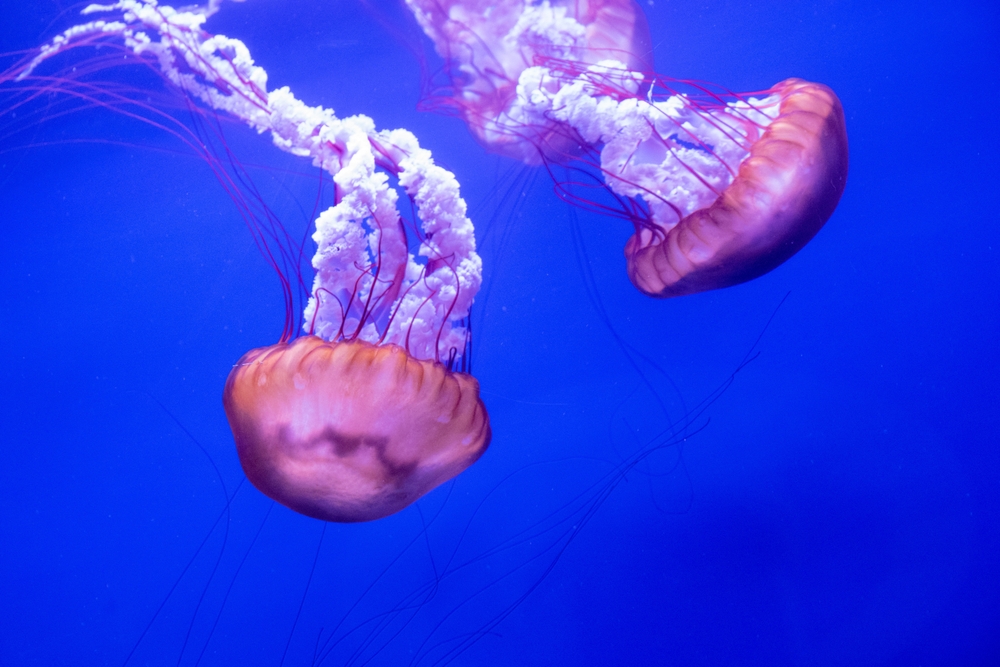
You don’t see it. You don’t hear it. You don’t even feel it—until your skin suddenly feels like it’s on fire. The sea nettle jellyfish, a frequent visitor to the Atlantic Coast and Gulf of Mexico, has tentacles packed with thousands of microscopic harpoons loaded with venom.
A single brush can cause fiery pain, redness, and a rash that can last for days. For some, the sting triggers allergic reactions leading to breathing difficulties and full-body swelling. And because jellyfish tentacles can detach and still sting after they’ve been ripped away, even a dead one washing ashore can ruin your day.
10. The Spiky Landmine: The Long-Spined Sea Urchin (Diadema antillarum)
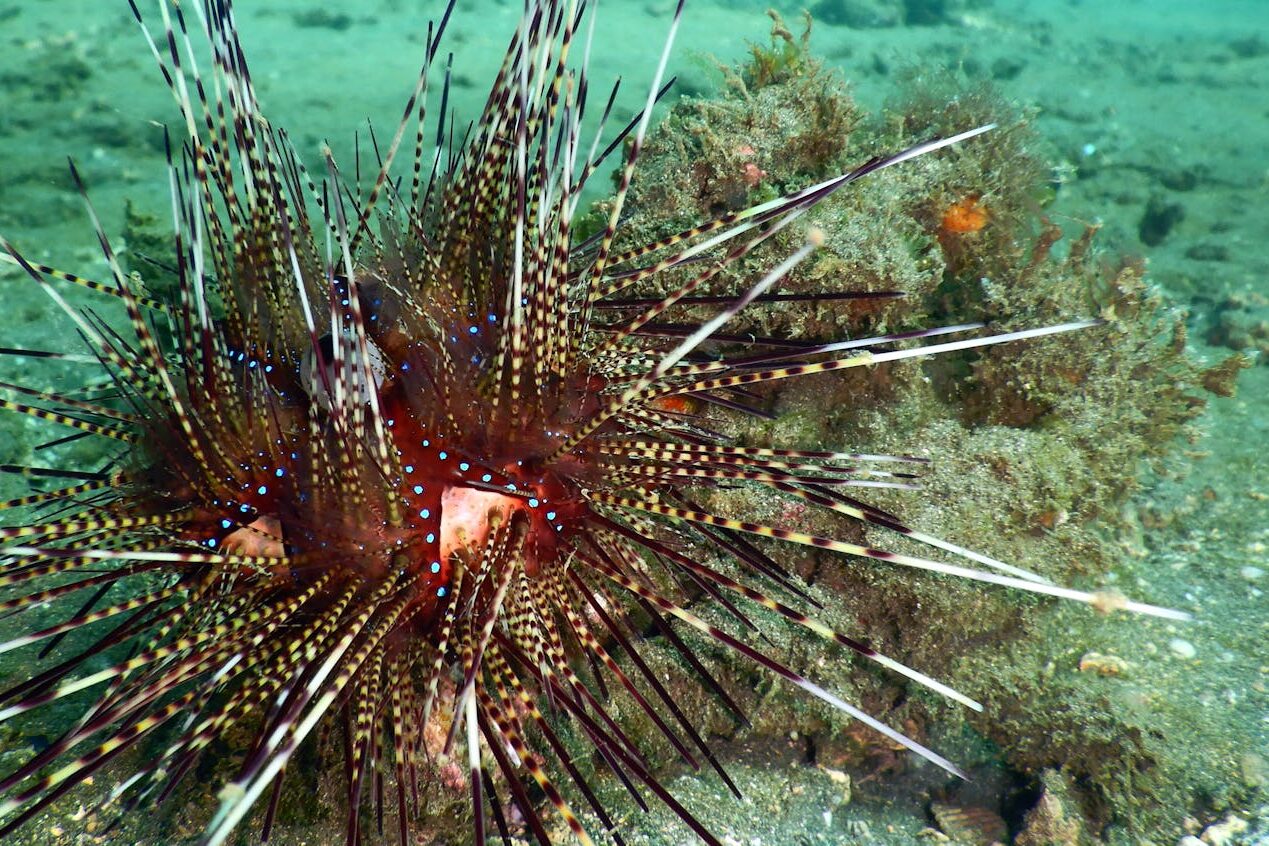
At first glance, sea urchins look like little black puffballs harmlessly sitting on the ocean floor. But step on one, and those innocent-looking spines turn into tiny, foot-impaling spears. Found in shallow waters off Florida, the Gulf of Mexico, and the Caribbean, the long-spined sea urchin has an unfortunate tendency to lodge its brittle, venomous spikes deep into flesh.
The pain is sharp, immediate, and worsens if the spines break off under your skin. Some unlucky victims have to undergo surgery to remove deeply embedded fragments. Even worse, the venom can cause muscle weakness, nausea, and in rare cases, temporary paralysis. It’s a small but mighty creature that proves you don’t need fangs or claws to be a nightmare.


